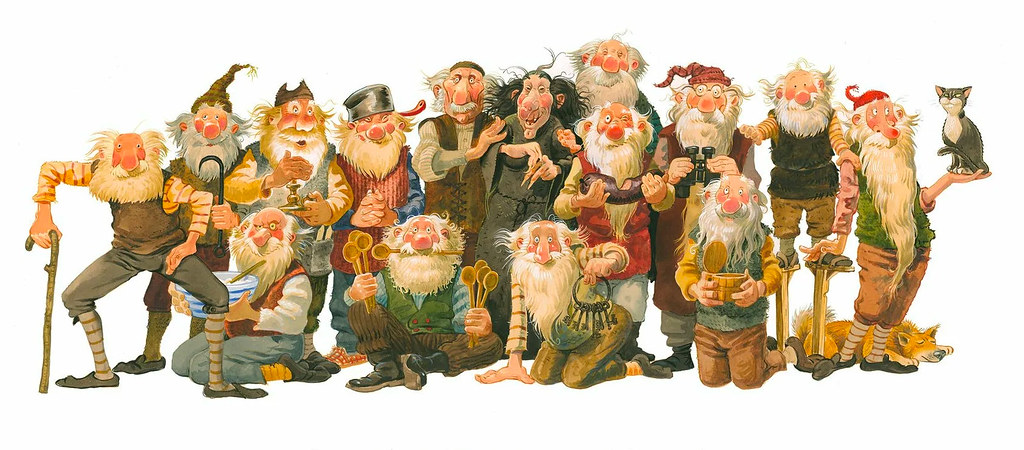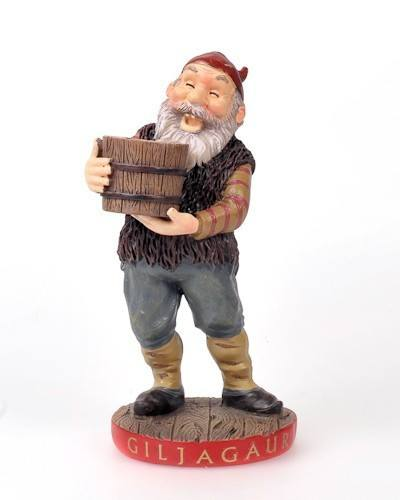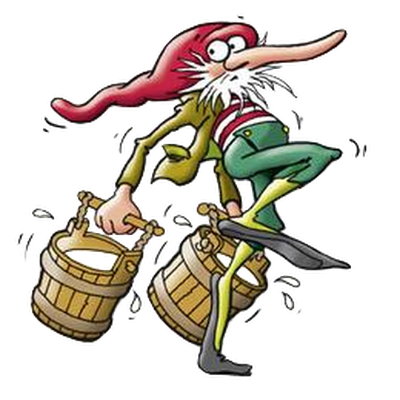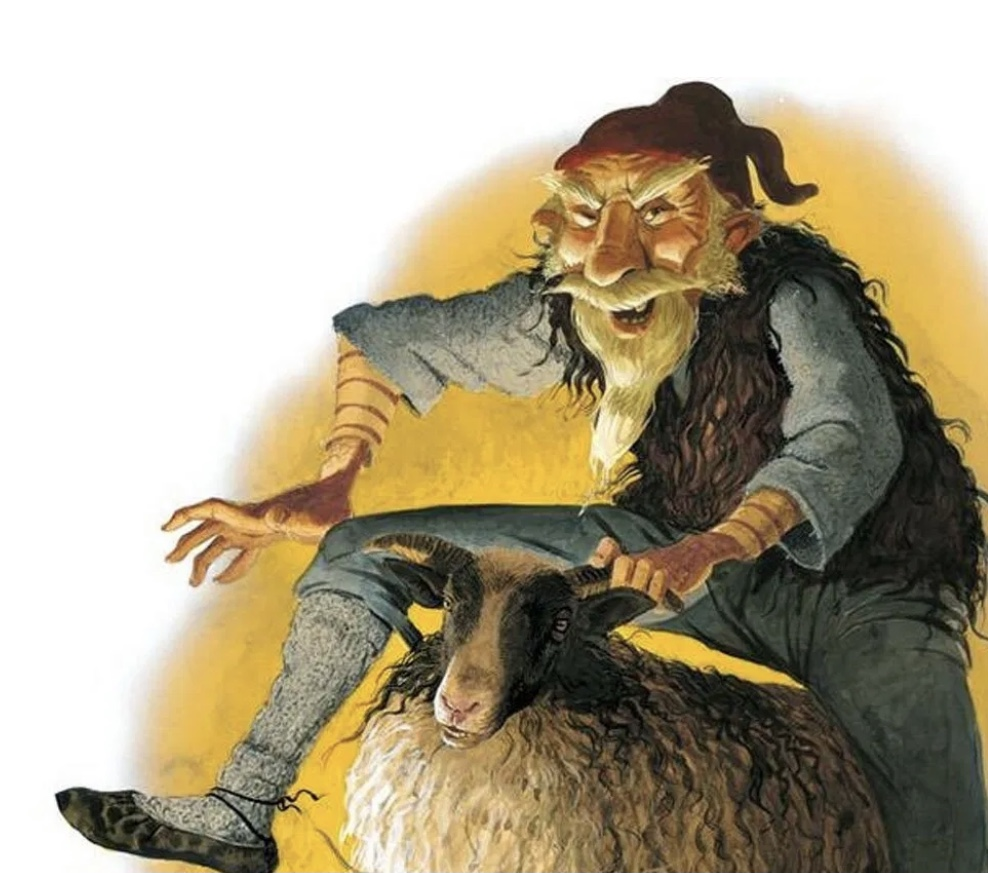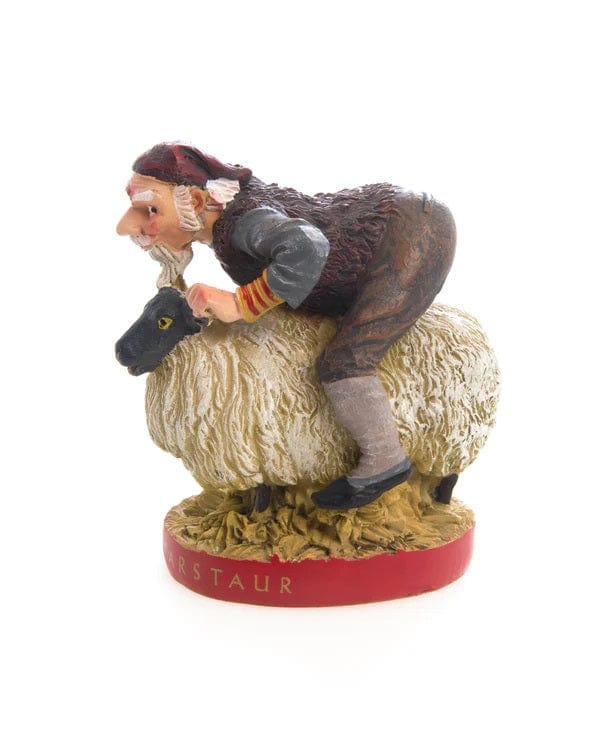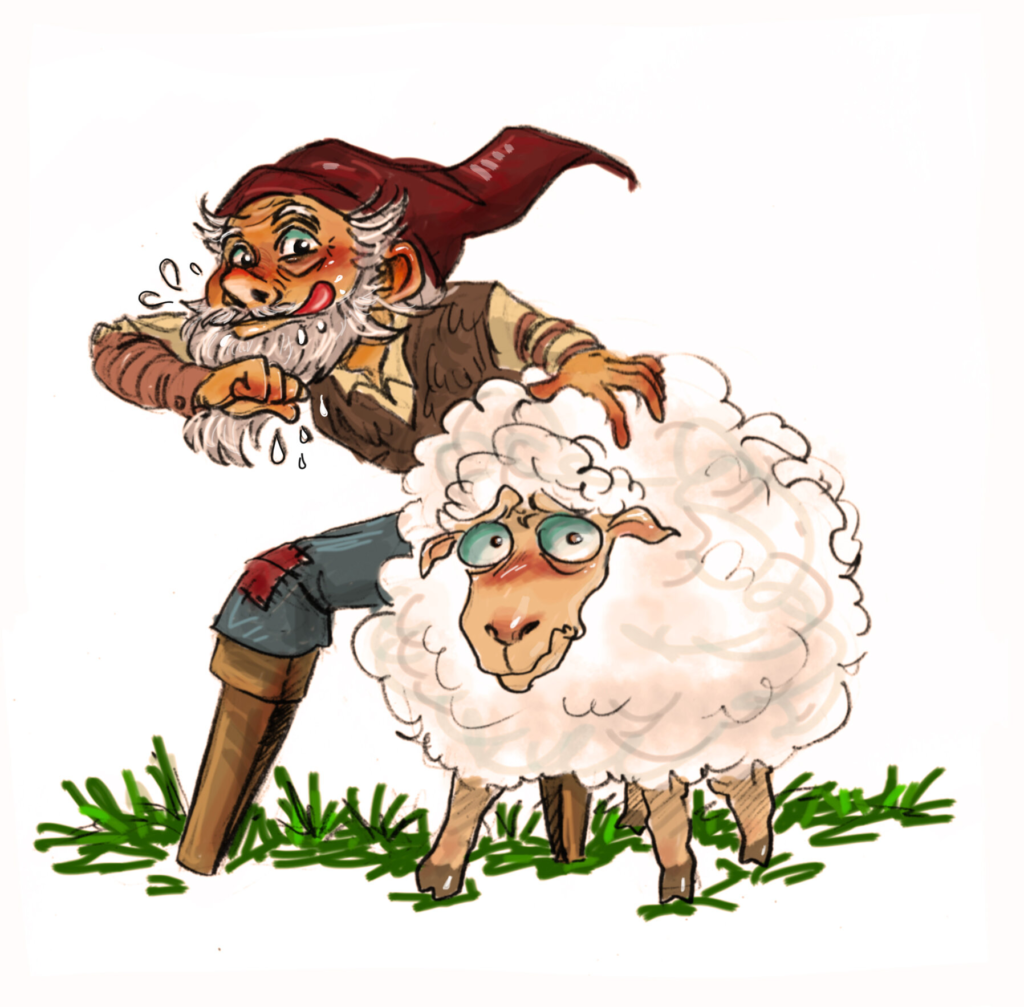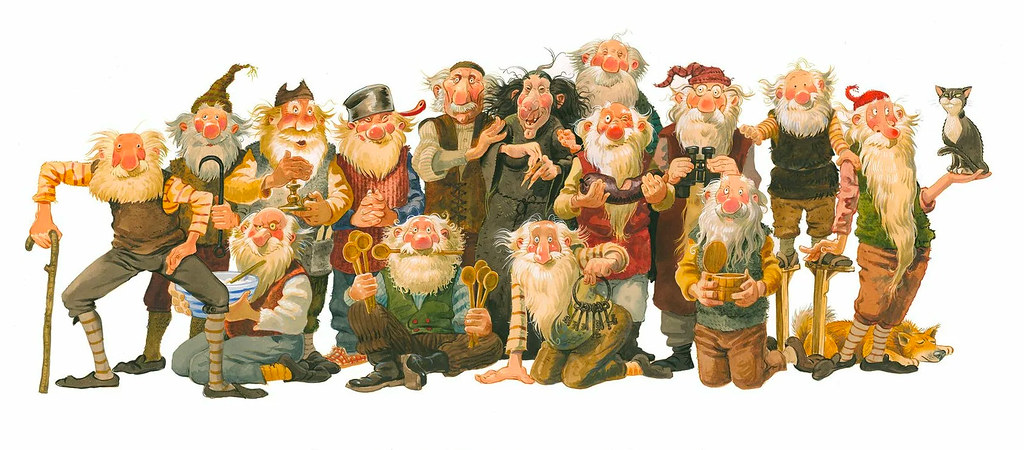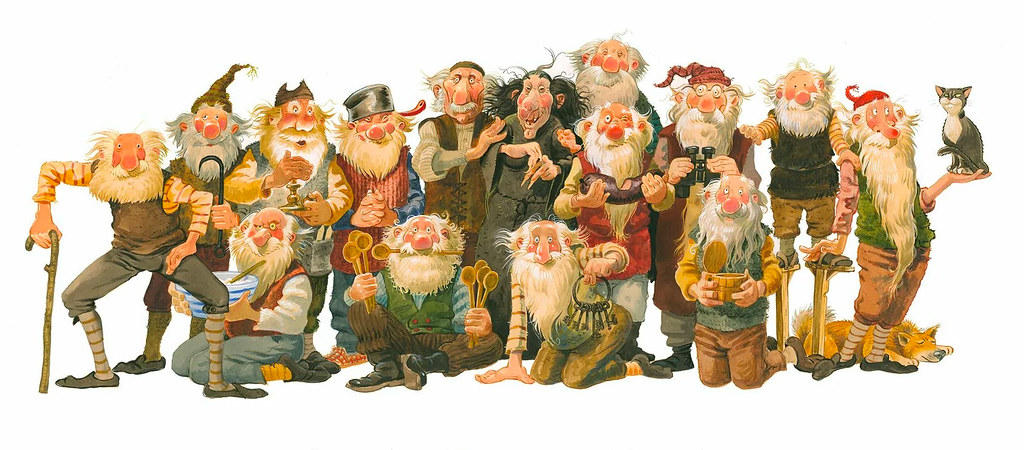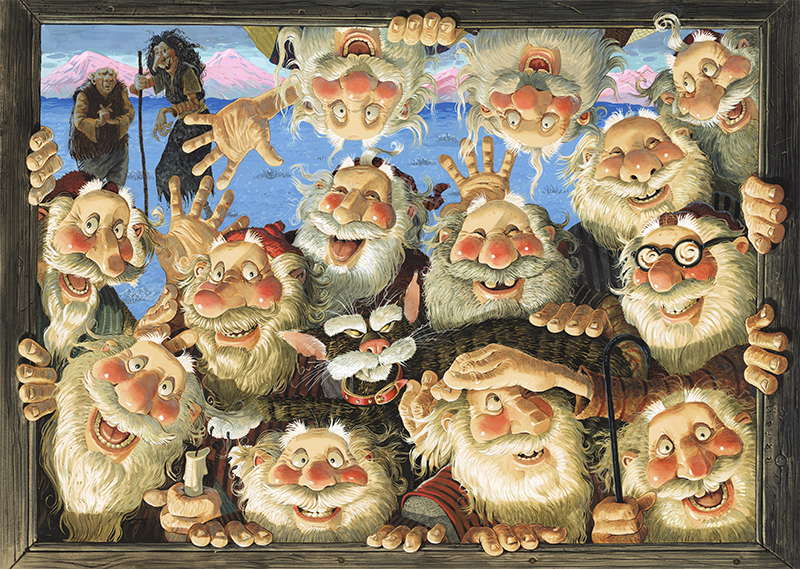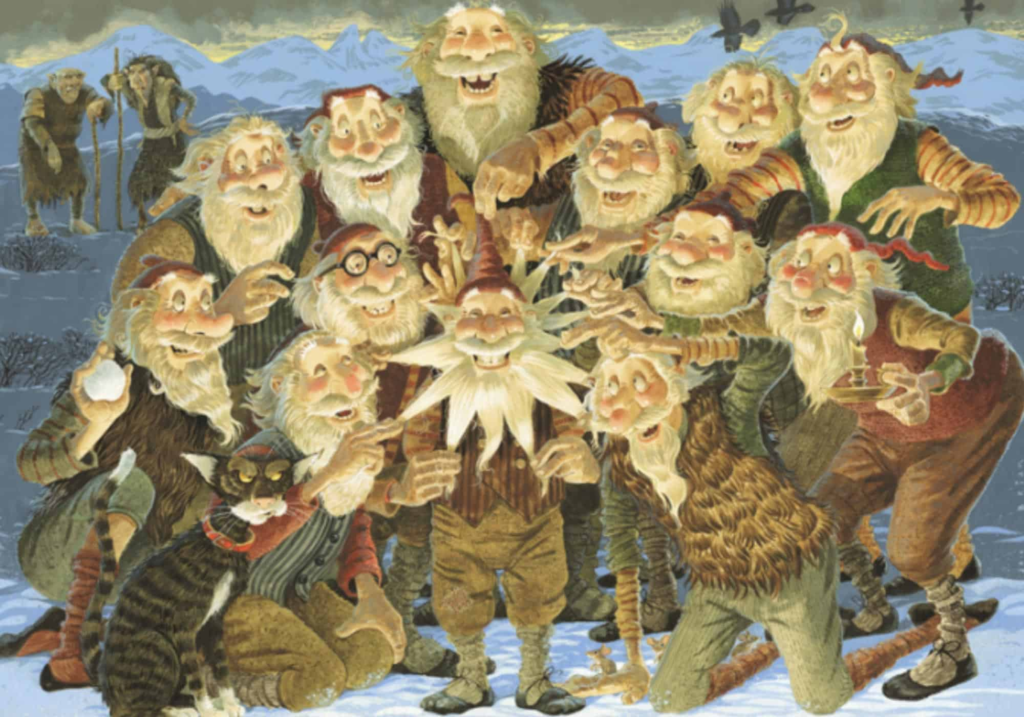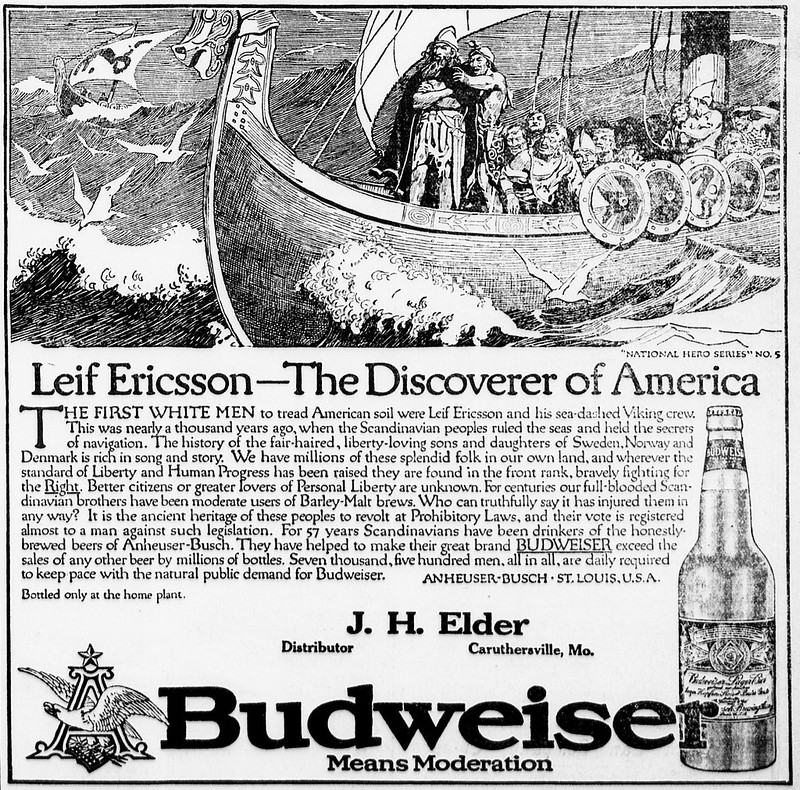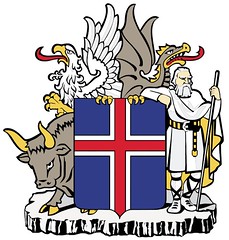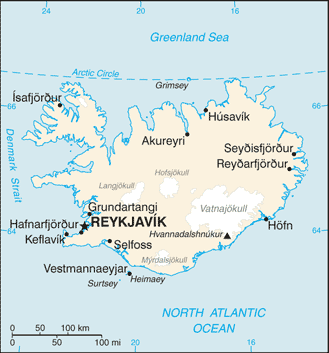
Hopefully you already saw my post on Tuesday with an overview of the Icelandic tradition of the Yule Lads. If you haven’t, go back and read that first so this will make more sense. According to folklore, today — December 14 — is the day when the third Yule Lad arrives.
The third Yule Lad’s name is Stúfur, which translates as Stubby or Shorty. He’s described as “abnormally short.” His particular brand of mischief is stealing pans to eat the crust left on them.
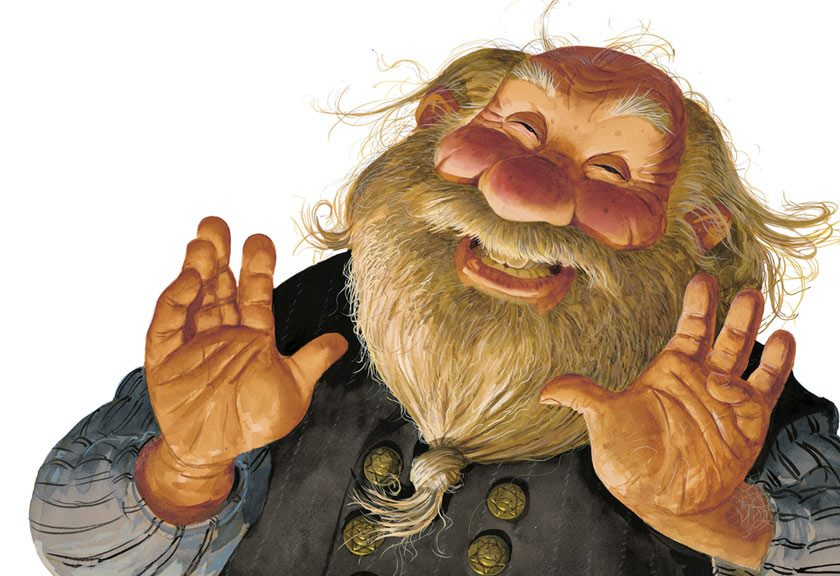
Here’s how he’s described in the 1932 Icelandic poem, “Yule Lads,” by Jóhannes úr Kötlum:
Stubby was the third called,
a stunted little man,
who watched for every chance
to whisk off a pan.
And scurrying away with it,
he scraped off the bits
that stuck to the bottom
and brims – his favorites.
Stubby arrives each year on December 14, and leaves again on December 27.

And here’s a more thorough explanation, by Robert Nelson, on Medium.
He is also abnormally short, which should, in theory, make it easier to sneak into your kitchen during high volume seasons like the holiday festivals.
Stúfur’s particular brand of mischief involves stealing away into your home to scrape the remains from your unwashed pans. There is some disagreement over whether he prefers sweet remains (i.e. the remains of cakes and sweetbreads) or savory remains (i.e. the leftovers from dinner).

And here’s another, from Iceland24:
Itty Bitty was the third,
That short fellow.
He borrowed a pan,
When he could do so.He ran away with it
And picked and ate the food-bits
That sometimes stick
To a pan here and there.This is the favorite Yule Lad of most Icelanders.. Stúfur! The name means Shorty in Icelandic.
Stúfur is the Hiccup of the Yule Lads, the acknowledged runt of the litter. He is the smallest and stubbiest of the Yule Lads in form. However, his troll and elf ancestry have also made him very strong. He may be small and not too powerful in appearance but, in reality, he can really beat up anyone he chooses. He can even knock out a Monstrous Nightmare better than Stoick can. In his sleep while chewing gum.
But the great irony is that the miniature warrior… that tiny Beowulf of a Yule Lad… is on a great quest to steal… uh… grease spattered frying pans.
It certainly is a weird hobby. Stúfur has a harder journey than the other Yule Lads. His little legs have to work harder. He often is covered by snow as he journeys to the villages and has to use a telescope poked up through the snow so he knows where is going. And he has to beat up all the dragons and Vikings he meets along the way.
And the reason Stúfur beats the odds and steals those frying pans? Well, it is because he likes to lick off the grease and drippings that are left in the frying pan. It’s rather humbling when you think about it… all that tough journeying and fighting to lick off a bit of bacon fat?
There is a parable in there for sure. But it’s kind of a weird one. Anyway, if you fry up anything on Dec. 14 and through Dec. 27, just don’t be surprised if your frying pan disappears moments after you set it aside. It’s Stúfur style recycling!

The 13 Yule Lads, Mom, Dad and Cat:
